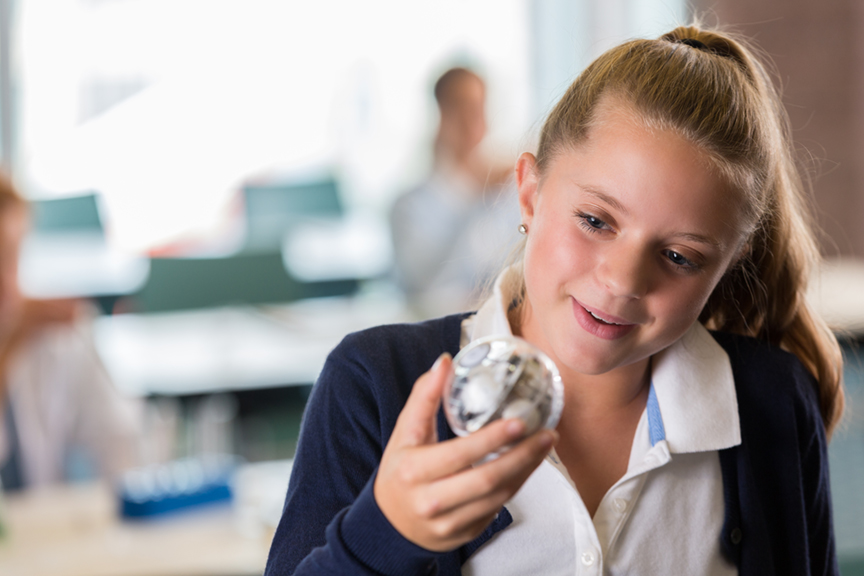
Explore water and sanitation as a basic human right; use robots to design, build, test, and drive an apparatus to safely transport clean drinking water to a community in need.
In a cross-disciplinary social studies and English language arts unit, learners in a Grade 7 classroom explored the impact of accessible, clean drinking water on the quality of life in Canada and around the world. They learned that the United Nations considers water and sanitation as a basic human right that is fundamental to dignity, prosperity, and health. Despite this, they discovered that there are communities in Canada and around the world that lack access to clean and safe drinking water.
Through their investigations, learners discovered that while Canada has the third-largest reservoir of fresh water in the world, there are approximately 50 Indigenous communities that are under boil water advisories and do not have reliable access to potable water. Using texts such as Nibi’s Water Song and We Are Water Protectors, learners explored the importance of clean drinking water in terms of the mental, physical, and spiritual health of Indigenous communities.
Additionally, learners also learned about water shortages in Sudan that have led to 17.3 million people being without reliable access to safe drinking water. While reading The Water Princess and A Long Walk to Water, learners explored the obstacles communities face in accessing potable water and the impact of widespread water shortages on sanitation, nutrition, and education.
As a final project, learners were asked to brainstorm as a class for ideas to help solve the issues facing communities near and far related to accessing potable water. The learners came up with many solutions including water filter systems, using chemicals, finding alternative sources, and using robotics. As a class, they voted on which path to take to work towards coming up with a solution to the water issues facing communities. The learners decided to explore the concept of a “water-carrying robot.”
Next, each learner collaborated with a partner to design, build, test, and drive a robot that would travel to a water collection spot, collect water, and return the water safely to a home base. Each pair of learners were given a Sphero robot to serve as the base of their design and they used recycled objects to build the water-carrying apparatus that was attached to their Sphero. Using the tile grid on the classroom floor, learners also created an obstacle course for the water-carrying robot to navigate. Each obstacle course had a home base that served as a start/end point, a water collection point, and at least six obstructions that reflected the real-life implications faced by either Indigenous or Sudanese communities in accessing water. These included outdated infrastructure, contaminated water, lack of legal or physical access, and/or implications for health, sanitation, nutrition, and education. Learners had a week of class time to create, test, and adapt their robot and obstacle course.
On presentation day, the Grade 6 class next door was invited to watch the learners test and drive their water collection robot through their obstacle course. Prior to driving the robot, each pair of learners explained their obstacle course to the Grade 6 class, taking time to discuss the many obstacles (and implications) faced by the respective community in accessing clean water. A nearby whiteboard was used to record the time it took for each robot to navigate its obstacle course, and the amount of water that was successfully collected and returned to the home base.
It was quite common for side conversations to occur between the Grades 6 and 7 learners, as the Grade 6 learners were quick to ask a question or suggest a design improvement. When reflecting back on the experience, the Grade 7 learners expressed profound pride in sharing their knowledge with the Grade 6 class and enjoyed how invested everyone was in the success of their water collection robot. They reflected on the connections and new learnings they had made through this unit of study, and water access continued to be a prevalent topic of conversation throughout the rest of the school year as issues came up through current events and media.
Picture Books
Tenasco, Sunshine. Nibi’s Water Song. Illustrated by Chief Lady Bird, North Winds Press, 2019.
Lindstrom, Carole. We Are Water Protectors. Illustrated by Michaela Goade, Roaring Brook Press, 2020.
Verde, Susan, and Georgie Badiel. The Water Princess. Illustrated by Peter H. Reynolds, G.P. Putnam’s Sons Books for Young Readers, 2016.
Novel
Park, Linda Sue. A Long Walk to Water. Clarion Books, 2011.